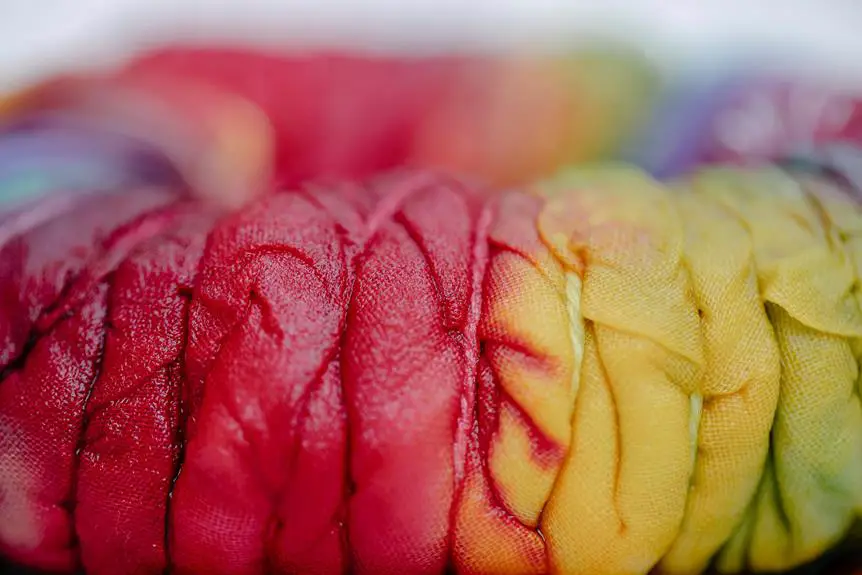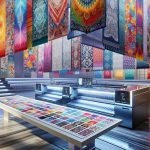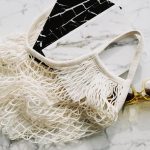If you want to achieve the best results in Pantone color mixing, you'll need the right fabric options.
Natural fibers like cotton and linen provide excellent color depth and vibrancy, while synthetic fabrics such as polyester offer durability and color retention.
Blend options, like cotton-polyester mixes, can combine the best of both worlds. Specialty textiles like spandex or rayon can also enhance color saturation.
When considering printing, factors such as fabric weight and texture should be taken into account for optimal color rendering.
Understanding the best fabric options for Pantone color mixing will allow you to master the art of achieving precise and vibrant colors in your designs.
Key Takeaways
- Cotton, linen, hemp, and bamboo are natural fibers suitable for Pantone color mixing.
- Synthetic fabrics offer versatility and durability in color choices, and advancements in technology have led to eco-friendly synthetic fabrics made from recycled materials.
- Blending synthetic fabrics with natural fibers offers enhanced performance and a broader range of color choices.
- Specialty textiles, such as custom-dyed options and eco-friendly materials, offer unique color effects and fabric performance.
Natural Fibers
When mixing Pantone colors, natural fibers offer a versatile and sustainable option for achieving vibrant and long-lasting hues in your fabric. Sustainable options are a growing consideration for many individuals, and natural fibers provide an eco-friendly choice. Fabrics such as cotton, linen, hemp, and bamboo are all derived from natural sources and are biodegradable, making them an environmentally conscious option for your color mixing needs.
Not only are natural fibers eco-friendly, but they also offer practical benefits. These breathable materials are known for their moisture-wicking properties, making them comfortable to wear in various climates. For those seeking mastery in fabric selection, understanding the advantages of natural fibers can greatly impact the quality and sustainability of the final product.
Synthetic Fabrics
Synthetic fabrics offer a wide range of color possibilities for Pantone mixing, providing versatility and durability in your fabric choices. When it comes to environmental impact, synthetic fabrics have received criticism due to their production process, which involves chemical treatments and the use of non-renewable resources. However, advancements in technology have led to the development of eco-friendly synthetic fabrics made from recycled materials. These fabrics not only expand the color spectrum for Pantone mixing but also contribute to sustainable practices.
In terms of colorfastness and durability, synthetic fabrics excel. They're known for their ability to retain color vibrancy, even after multiple washes, and are resistant to shrinking and wrinkles. This makes them an excellent choice for garments that require long-term use and vivid color representation. Additionally, synthetic fabrics are often blended with natural fibers to enhance their performance, creating fabrics that offer the best of both worlds.
Considering the environmental impact and the impressive colorfastness and durability of synthetic fabrics, they're undeniably a valuable option for Pantone color mixing.
Blend Options
To expand the color possibilities for Pantone mixing, consider incorporating blend options that combine synthetic fabrics with natural fibers for enhanced performance and a broader range of color choices. By blending synthetic and natural fibers, you can achieve a balance of properties such as color accuracy and fabric durability. This blend allows for the best of both worlds, offering the vibrant color options of synthetic fabrics along with the breathability and comfort of natural fibers.
| Synthetic Fabric | Natural Fiber | Benefits |
|---|---|---|
| Polyester | Cotton | Color accuracy, durability |
| Nylon | Wool | Color vibrancy, warmth |
| Spandex | Silk | Stretchability, luxurious texture |
Specialty Textiles
Once you have explored the blend options for Pantone color mixing, it's important to consider specialty textiles for achieving unique color effects and fabric performance.
- Custom Dyeing
Custom dyeing allows you to create specific Pantone colors on your chosen fabric, giving you full control over the color outcome. This method is ideal for achieving precise color matching and creating customized shades for your designs.
- Textile Sustainability
When selecting specialty textiles for Pantone color mixing, it's essential to consider the sustainability of the fabrics. Look for eco-friendly options such as organic cotton, bamboo fabric, or recycled polyester. These sustainable textiles not only support environmental conservation but also offer a wide range of Pantone color possibilities.
When it comes to specialty textiles, custom dyeing opens up a world of color possibilities, enabling you to bring your Pantone color visions to life with precision. Additionally, prioritizing textile sustainability ensures that your color mixing endeavors align with ethical and environmentally conscious practices. By incorporating these elements into your fabric selection, you can achieve both vibrant color results and a positive impact on the planet.
Considerations for Printing
Consider the printing method for achieving the desired Pantone color mixing results on your chosen specialty textiles. When it comes to printing on specialty textiles for Pantone color mixing, it's crucial to consider the fabric texture and the printing limitations for color accuracy.
Different printing methods, such as screen printing, heat transfer, or digital printing, may have varying capabilities and limitations when it comes to color vibrancy and accuracy.
The fabric texture plays a significant role in how the colors will appear after printing. Smooth fabrics like silk and satin may produce more vibrant colors, while textured fabrics like canvas or denim can give a more muted or vintage look. Understanding how the fabric texture interacts with the printing process is essential for achieving the desired Pantone color mixing results.
Moreover, it's important to be aware of the color accuracy that can be achieved with different printing methods. Some printing techniques may have limitations in accurately reproducing certain shades, especially when working with Pantone colors. Being mindful of these factors will help you make informed decisions when selecting the printing method for your specialty textiles.
Frequently Asked Questions
Can Pantone Colors Be Accurately Matched on All Types of Fabrics, or Are There Limitations to Certain Materials?
You can achieve color accuracy with Pantone on many fabrics, but there are limitations. Challenges arise due to different material types. Balancing these factors is crucial for achieving Pantone color matching across various fabric options.
Are There Any Specific Pantone Colors That Are More Challenging to Achieve on Certain Fabric Types?
Achieving Pantone colors on different fabric types can pose challenges due to fabric limitations. Some specific Pantone colors may be more challenging to achieve on certain fabrics, requiring careful consideration of material properties and dyeing techniques.
What Are the Best Fabric Options for Achieving Pantone Colors With a Metallic or Shimmer Effect?
For achieving Pantone colors with a metallic or shimmer effect, consider fabric textures like satin, silk, or organza. These options can enhance the metallic sheen and shimmer effect while maintaining color accuracy for a stunning finish.
How Do Different Fabric Finishes, Such as Matte or Glossy, Affect the Final Appearance of Pantone Colors?
Different fabric finishes, like matte or glossy, influence the final appearance of Pantone colors. Matte fabrics absorb more light, giving colors a softer, muted look. Glossy fabrics reflect light, intensifying color perception and creating a more vibrant, eye-catching effect.
Are There Any Environmental or Sustainability Considerations When Choosing Fabric Options for Pantone Color Mixing?
When considering fabric options for Pantone color mixing, it's important to factor in the environmental impact. Look for sustainable textiles that promote eco-friendly dyeing processes and ensure color fastness for a lasting, vibrant result.
- Innovations in Moisture-Wicking Textiles - July 18, 2024
- Engineering Fabrics for Optimal Performance - July 18, 2024
- The Science of Breathability in Fabrics - July 18, 2024







